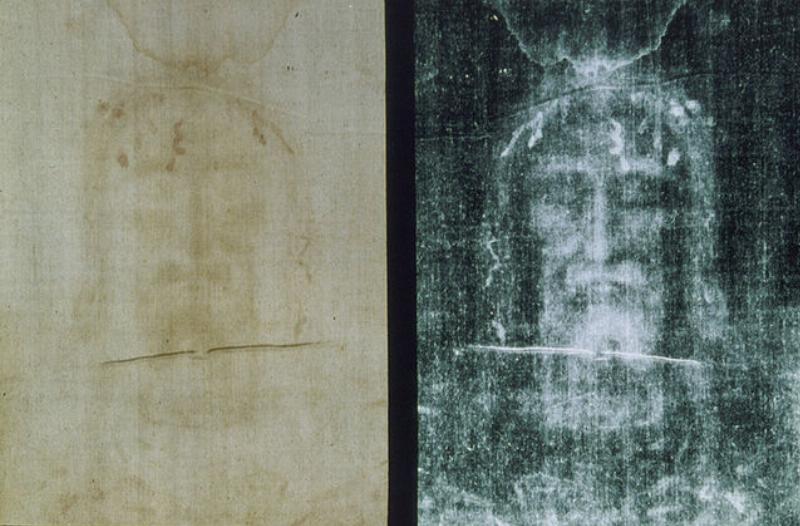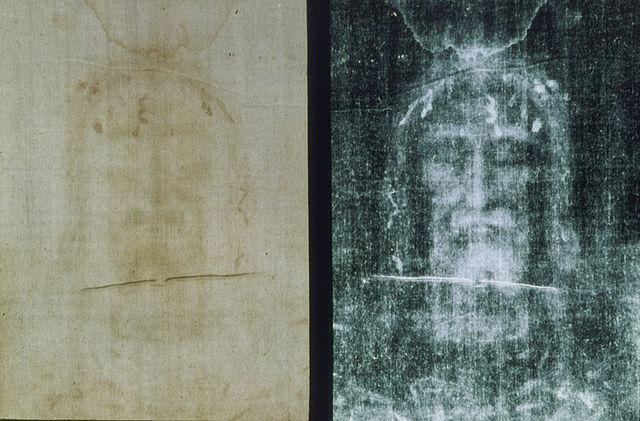


The discovery of artifacts can change modern perspectives of ancient times.
Take, for example, the Antikythera Mechanism—a 1901 discovery by Mediterranean Sea divers found among the ruins of a shipwreck. The Mechanism consisted of a complex system of bronze gears, predicting astronomical events and even tracking the cycles of the ancient Olympics by accurately calculating the positions of the planets and eclipses. Astonishingly, the Mechanism was found to be 2,000 years old and is considered now to be the world’s first analog computer!
Another artifact discovery occurred in the mid-14th century—one which, ever since, has stirred great debate over its origin. New evidence supports that it too has existed for two millennia, changing our perception of what actually was captured at the moment of its creation.
The 14-foot-long Shroud of Turin is believed by many to be the actual burial cloth placed over Jesus after His crucifixion. An easily discernible image of the Son of God is seen on it—one that, despite today’s technological advances, still remains impossible to replicate.
Disbelievers suggest the image was the work of a master artist who created the Shroud long after Jesus’s death. They also suggest that carbon dating done in 1988 indicates the time of origin was more than a millennium after Christ’s crucifixion.
The Shroud’s history was first documented in the 1350s. It was presented in France by one of Europe’s most honorable and admired knights, Geoffroi de Charny, sometime before his death in 1356. Interestingly, in 1389 it was declared a forgery by the bishop of Troyes, who believed it to be the work of a cunning artist. However, Pope Clement VII, who served in a papal capacity from 1523–1534, sanctioned its use as a representation of the Shroud of Jesus.
In 1453, the Shroud became the property of the Italian royal family—the House of Savoy. Relocated to Chambery (then part of Italy but now part of France), it was, in 1532, damaged by fire. Transferred to Turin, Italy, in 1578, the Shroud remains there today although the last member of the Savoy royal line, King Umberto II, willed it to the Vatican—which officially took possession in 1983.
The debate about the Shroud’s authenticity has led to extensive scientific scrutiny. Pieces of its cloth were subjected to carbon dating in 1988 suggesting its origin was between 1260 and 1390. However, the carbon dating tests have since been discredited not only because the Shroud’s exposure to the 1532 fire may well have impacted accurate testing, but also because its results conflict with other scientific methods.
Contributing to its authenticity is the fact that the three-dimensional image of Jesus appears to be a photographic negative. While linear perspective—i.e., three dimensional painting—was formalized around 1415, negative photography was not developed until the early 19th century. And, had the image been painted, the paint would have deeply penetrated the fabric, which it did not.
A new theory not only further supports authenticity, it suggests it was not the dead image of Jesus that was captured but rather that of a resurrecting Christ. It surmises the image is not one of a dead Jesus lying prone but one of Him in an upright position. Discrediting the former belief is that—consistent with the law of gravity—His hair falls directly down both sides of His head, covering His ears.
Tests conducted of a subject with similar hair length lying prone on a table showed, if in such a position, one’s hair would lay flat on the table, exposing the ears. Also discrediting the previous belief is the absence from the image of signs of the normal compression that occurs of some body parts when one is in a supine position.
And, in yet another “ground-breaking discovery, researchers have identified an inscribed name on the Shroud offering what many consider definitive proof of its authenticity.”
Aided by the most modern technology, researchers were able to identify letters, in both Latin and Greek, hidden within the Shroud’s fabric that were never before visible. An inscription bears the word “Nazarine,” which is a clear reference to Jesus.
Further adding to both the Shroud’s authenticity and what the image actually captured are the following:
Minute pieces of limestone containing dirt unique to Jerusalem and matching samples near the site of the crucifixion were embedded within the fabric.
Abrasions on the image’s shoulder indicative of one having carried a heavy object (such as a cross) as well as thorn-like wounds on the head were discovered.
Wrist wounds found on the image measure the exact same size of a nail’s circumference while an elliptical-shaped side wound is comparable to one that could have been inflicted by the head of a spear used by Roman soldiers back then.
An extraordinary separation can be seen on the Shroud between red and clear blood serum—typical of one who has died and suffered a wound resulting in a distinct flow of both blood and water from the wound. This was an event specifically mentioned in the Gospel of John.
Traces of 49 different types of pollen were identified on the Shroud, of which 33 were native to Palestine and three were unique to Jerusalem.
A faint imprint of coins appears on the image’s eye lids–placement of which was a typical Jewish tradition of that day for those who had died. The imprints are believed to be of coins existing two years before the birth of Christ and to have been used in the day of Pontius Pilate—the Roman official who ordered the crucifixion of Jesus.
The Shroud has a 3-inch wide side strip sown with a stitch only used in Palestine during the first century.
In another surprising discovery, it is discernible as well from the Shroud’s image that the subject was not static, revealing some subtle signs of movement, typical of one still breathing.
While the image does not portray a supine Jesus, nor does it show Him standing or resting upon anything but, rather, “floating.” This begs the question why would He appear to be suspended in mid-air—unless it was the moment of the resurrection that was captured on the fabric.
As the image was not painted, the theory has emerged it was created by an intense burst of energy, similar to the vacuum ultraviolet radiation of lasers, that could have discolored the linen fibers, without scorching the cloth. This further supports a conclusion that the Shroud captured the resurrection itself.
With all the detail now known about the Shroud, it is inconceivable that it could have been the fraudulent work of man, created long after the resurrection of Jesus. While many of the details offered above might seem simplistic in resolving the complexity of such an issue, we need to recall an idiom, misattributed to the Devil, that “God is in the details”—a German quote emphasizing how crucial meticulous attention to detail is in achieving truth and accuracy.
Hopefully, the Shroud of Turin’s revelations above—along with recent developments about the possible discovery of Noah’s Ark—will bring Christianity’s long term decline in America to an end.

Image: Public domain.
